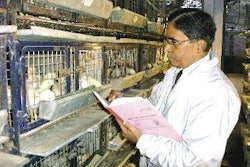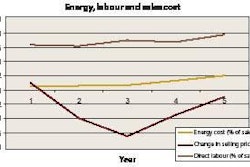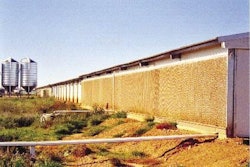The H5N1 strain of highly pathogenic avian influenza (HPAI) first reported on 25 February with 56 outbreaks in the ensuing weeks but only in small farms, house pens and falcons kept as pets. Nevertheless Kuwait slapped a total ban on import and export of birds and closed down bird markets, hundreds of shops selling live poultry and the emirate’s only zoo. Culling commenced and 400,000 birds were eventually destroyed.
Other countries affected by HPAI have failed to take this type of action but Kuwait then embarked on a nationwide surveillance and testing programme of the emirate’s entire poultry industry, including huge commercial flocks of layers and broilers. More than 11,000 birds were tested during March, said Health Minister Massouma Al-Mubarak. This revealed another 50 outbreaks including some in Kuwait’s huge commercial poultry farms.
No infection was found on the big broiler units that produce 32 million meat birds a year, but results from layer farms concentrated at Al Wafrah in the southern region on the Saudi border painted a different picture.
With three of Kuwait’s 16 biggest farms infected, authorities embarked on a massive cull at the end of March involving 1.1 million birds and in doing so removed most of the country’s laying flock.
“The figure represents 60 percent of total layer birds in Kuwait supplying 88 percent of local needs”, said Jassim Al-Bader, Chairman of the Board of the Public Authority for Agricultural Affairs and Fish Resources. “We already have over 65 teams comprising 400 employees working on fighting the virus and burying all the infected birds in a large trench.” He urged all citizens and expatriates not to transport live birds into or out of Al Wafrah until official notification.
Within days, another outbreak within the Al Wafrah complex of layer farms was announced, raising chickens culled to 1.3 million and now representing 75 percent of egg production in the emirate. The government pledged to compensate affected farms for losses to culling. Local daily newspaper ‘Al Seyassah’ quoted a figure of US$51.8 million before the final outbreak.
Despite repeated rumours, Health Minister Maasouma Al-Mubarak said there were no human infections with H5N1 in Kuwait with 552 people who had been in contact with infected birds testing negative for H5N1. “It is in the interest of no one to keep relevant information secret” said the minister, adding the Kuwaiti government was dealing with the issue in full transparency and clarity.
Four Bangladeshi expatriate workers who were members of teams involved in culling were later reported to be in hospital with influenza-like symptoms. This is not the first time that anyone has been admitted to hospital to be kept under observation for the disease. A total of 22 people have so far been admitted to hospital for monitoring but they were later discharged, negative for H5N1. There was greater concern for the four new admissions said a health ministry spokesman because they had been handling infected poultry.
The number of outbreaks in poultry and pet bird species now exceeds 100. The first and only previous outbreak was in a flamingo at a seaside villa in November 2005.


















